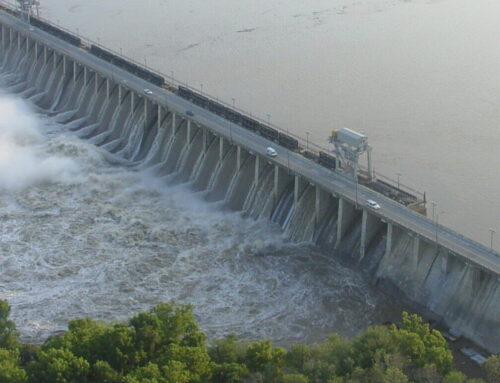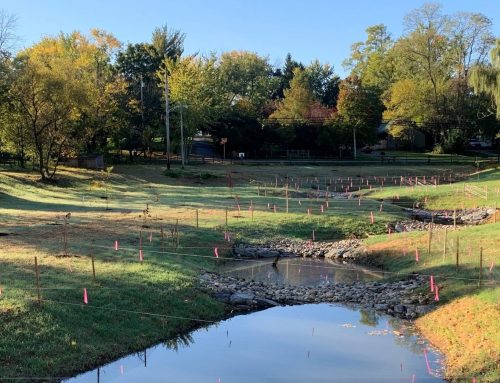A 2016 report from the Chesapeake Bay Program’s Scientific and Technical Advisory Committee found that improved management of the roadside ditch network could be a cost-effective means of reducing pollution from roads, developed areas, and farmland in many rural and/or un-regulated portions of the Bay watershed. Following the release of this report, the Center for Watershed Protection participated in a Chesapeake Bay Roadside Ditch Management Team to discuss a path forward for defining, crediting and verifying this group of practices. The Center has continued to advance the practice of roadside ditch management through research, implementation and development of guidance. Several projects we have recently been involved with are described below.
Implementation
Ditch Retrofits in Talbot County, MD – The Center provided design and construction inspection services for 13 ditch retrofits installed in Talbot County, a primarily rural county located on the eastern shore of the Chesapeake Bay in Maryland. The work included developing standard templates of three different types of ditch retrofits:1) bioreactor, 2) two-stage ditch, and 3) bioswale. The site conditions dictated which type of retrofit would best fit the ditch. Construction was completed in 2018. Talbot County Department of Public Works (DPW) funded this work through a grant from the Maryland Department of Natural Resources Chesapeake and Atlantic Coastal Bays Trust Fund to help meet their Chesapeake Bay restoration goals.
Ditch Retrofit Design in Norfolk, VA – The Center worked with the Elizabeth River Project in Norfolk, VA to develop designs for three urban ditch retrofit projects. The projects each have differing designs and characteristics and will be installed as part of a larger initiative to restore Broad Creek, a tributary to the Elizabeth River.
Research
Bioreactor Monitoring Study – The Center worked with Talbot County DPW to conduct monitoring to quantify the nitrogen removal performance of denitrification woodchip bioreactors, using three of the projects constructed with the County. The Center designed and implemented the monitoring study, summarized the study results, and helped to disseminate them to other Eastern Shore counties. The results from this monitoring project mostly support using a bioreactor as a method to reduce nitrogen in groundwater and surface water. The data did show that water is able to infiltrate into the surrounding soil quickly through the bioreactor. The potential for the release of phosphorus should also be considered when designing a bioreactor. If the water treated by the system does not travel through an aerobic environment before being released into the Bay, the bioreactor may become a source of phosphorus. This project was funded by the Chesapeake Bay Trust.
Guidance
Bay-Wide Roadside Ditch Management Guidance – The Center worked with Hirschman Water & Environment to develop guidance for enhanced treatment by roadside ditch management practices for the Chesapeake Bay Program (through a subaward from the Chesapeake Bay Trust). The manual includes detailed design guidance for: Ditch Elimination, Ditch Stabilization, Ditch Treatment, and Ditch Retrofits. The design guidance addresses: practice feasibility, minimum design specifications, sediment and nutrient crediting protocol and design examples, construction sequence and inspection procedures, procedures for project acceptance, reporting and crediting, maintenance tasks and visual indicators, and verification procedures. It also includes design guidelines for enhancing the nutrient removal performance of these practices in a format that can easily be incorporated into existing BMP specifications.
Roadside Ditch Management Manual for Rural and Coastal Communities– The Center developed this manual through a contract with Talbot County DPW. The manual provides guidance on roadside ditch management practices that improve water quality and can be incorporated into existing management programs in rural eastern shore communities. Many of the management practices involve low or no-cost modifications to normal ditch maintenance; some have the potential to decrease maintenance costs. The guidance covers both well-established maintenance improvements that could be easily incorporated into existing roadside ditch management programs, as well as more intensive efforts that can improve water quality during ditch management, such as ditch reconstruction.
For more information on these projects, contact Carol Wong (ckw@cwp.org), Bryan Seipp (bts@cwp.org) or Bill Stack (bps@cwp.org).






